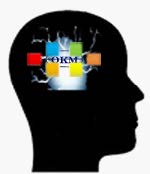Details
What are Knowledge Models?
- Knowledge Models are usually represented in knowledge languages, e.g.
- Topic Maps
- Business Process Models,
- Application diagrams
- etc.
- Several knowledge languages are included in knowledge modelling frameworks, e.g.
- PROMOTE
- KDML
- Knowledge-MEMO
What is the goal of OKM?
- Discussion, Changes and Extensions of
- Modelling Languages
- Methodology
- Algorithms/Services
- Motivation: Knowledge models are used in an application scenario and their knowledge language needs adaptations
What are examples for algorithms/services?
- Create, Update, Delete and Edit knowledge models
- Connect different knowledge models
- Align two models
- Transform into another knowledge language
- Linking Models, i.e. in one model the content of another model in other language may be referenced
- Supporting Services
- Generate value of an attribute out of other attribute values
- Restrict the possible values of an attribute
- Knowledge Languages may need to be extended to support further services
- Extensions may affect the notebook of graphical objects, i.e. the attributes
- Extensions may also include further graphical elements
Does OKM use the OMI infrastructure?
- OKM uses OMI which to engineer a modelling method for OKM
- OKM uses and develops services on OMI to design knowledge models
- OKM uses and develops services on OMI that interpret and execute knowledge models
What is the project history?
- Open Knowledge Models is an initiative starting from the project plugIT.


